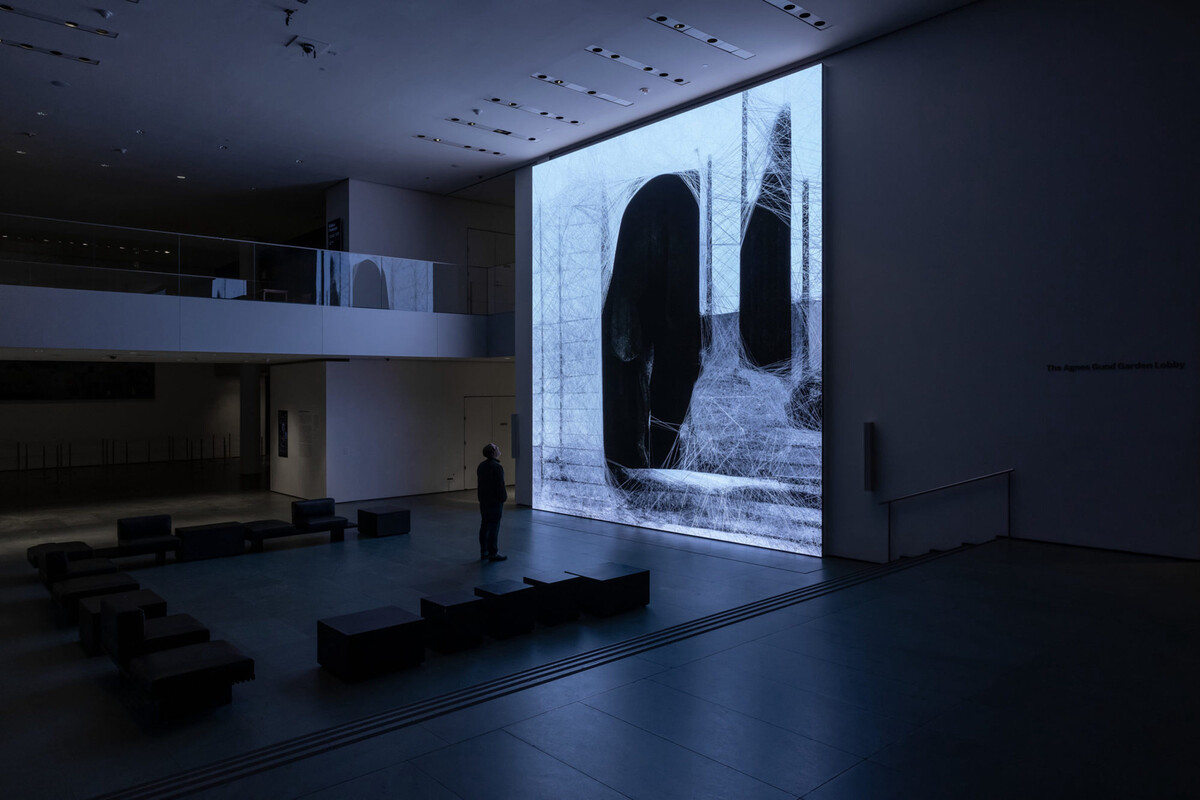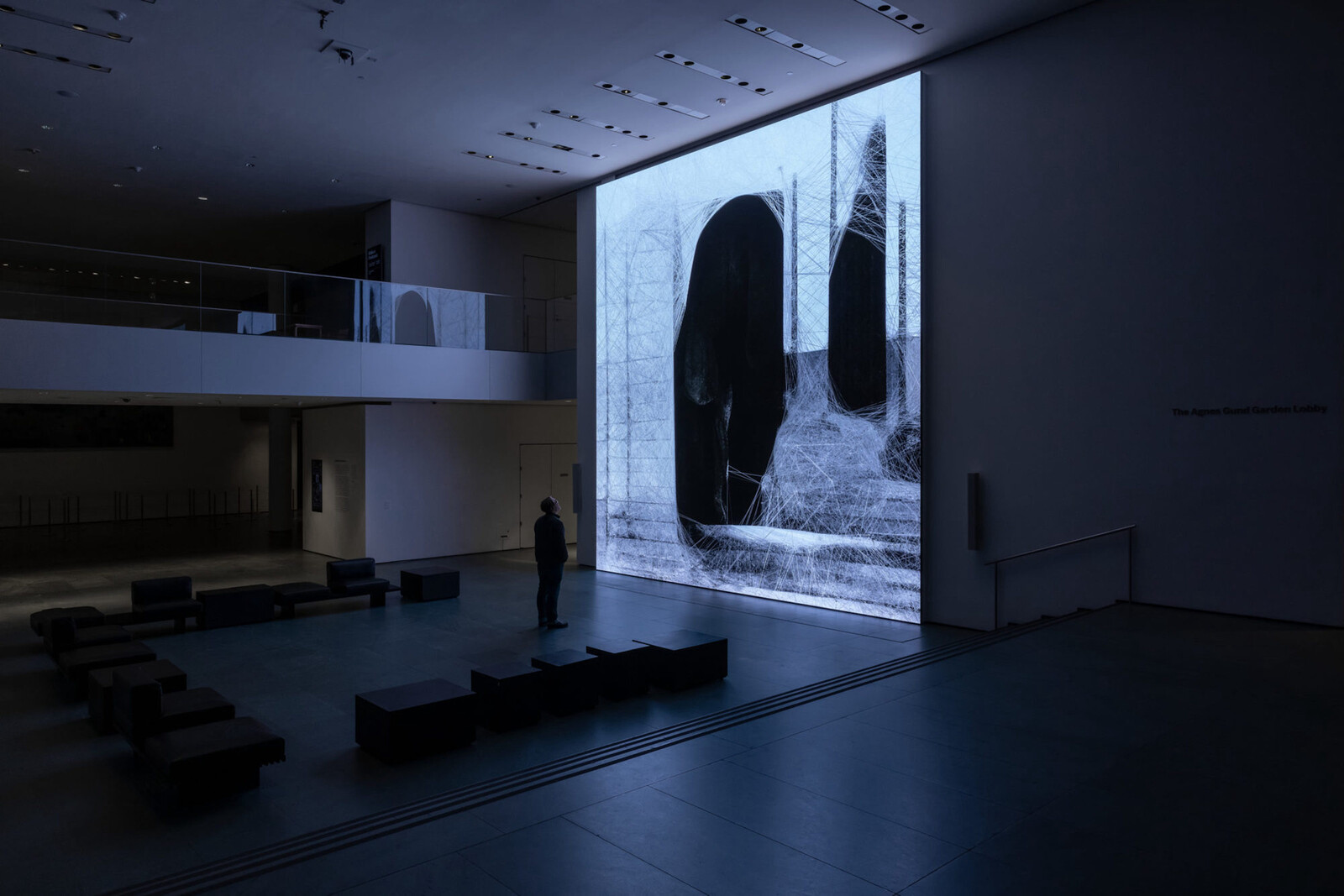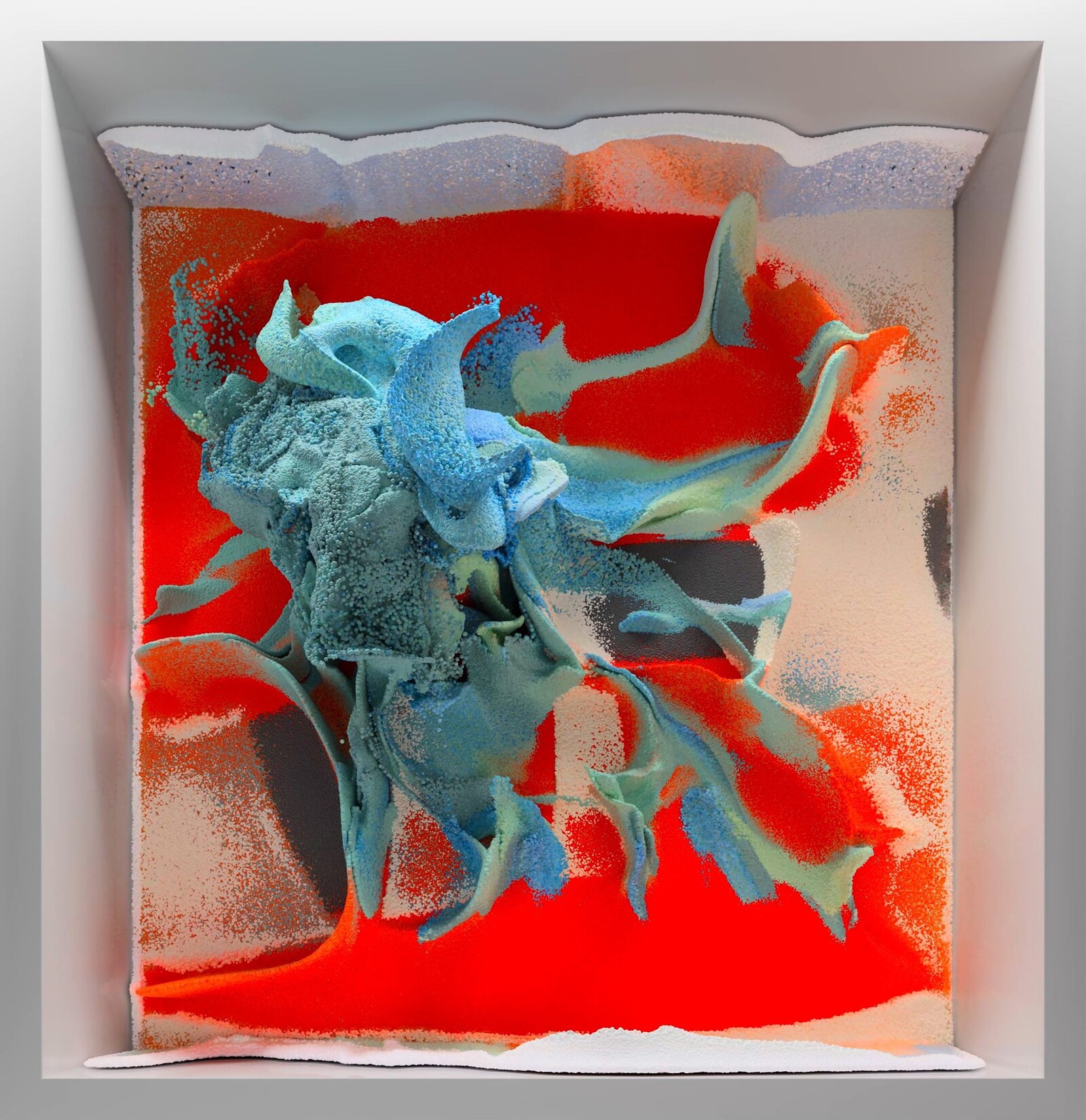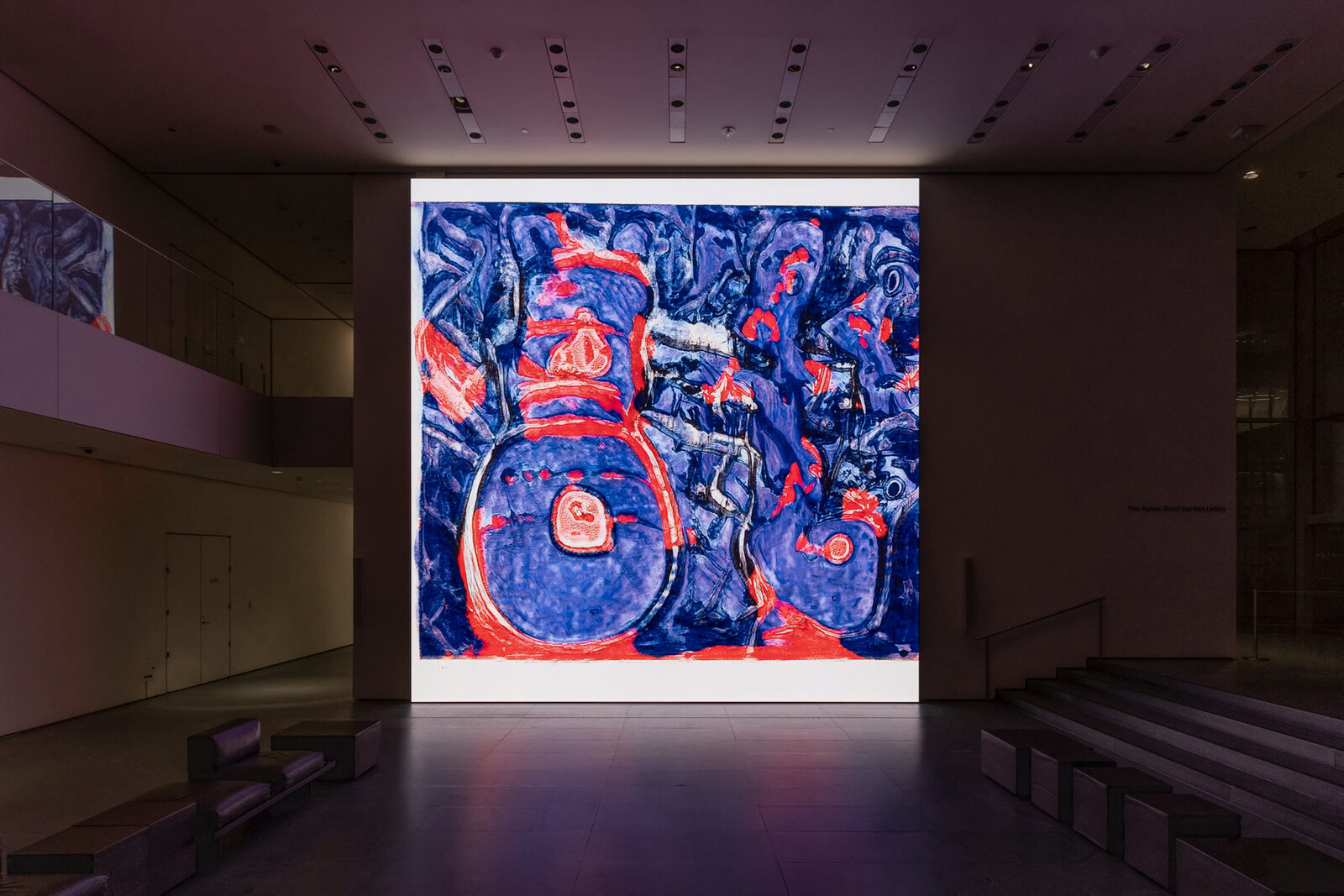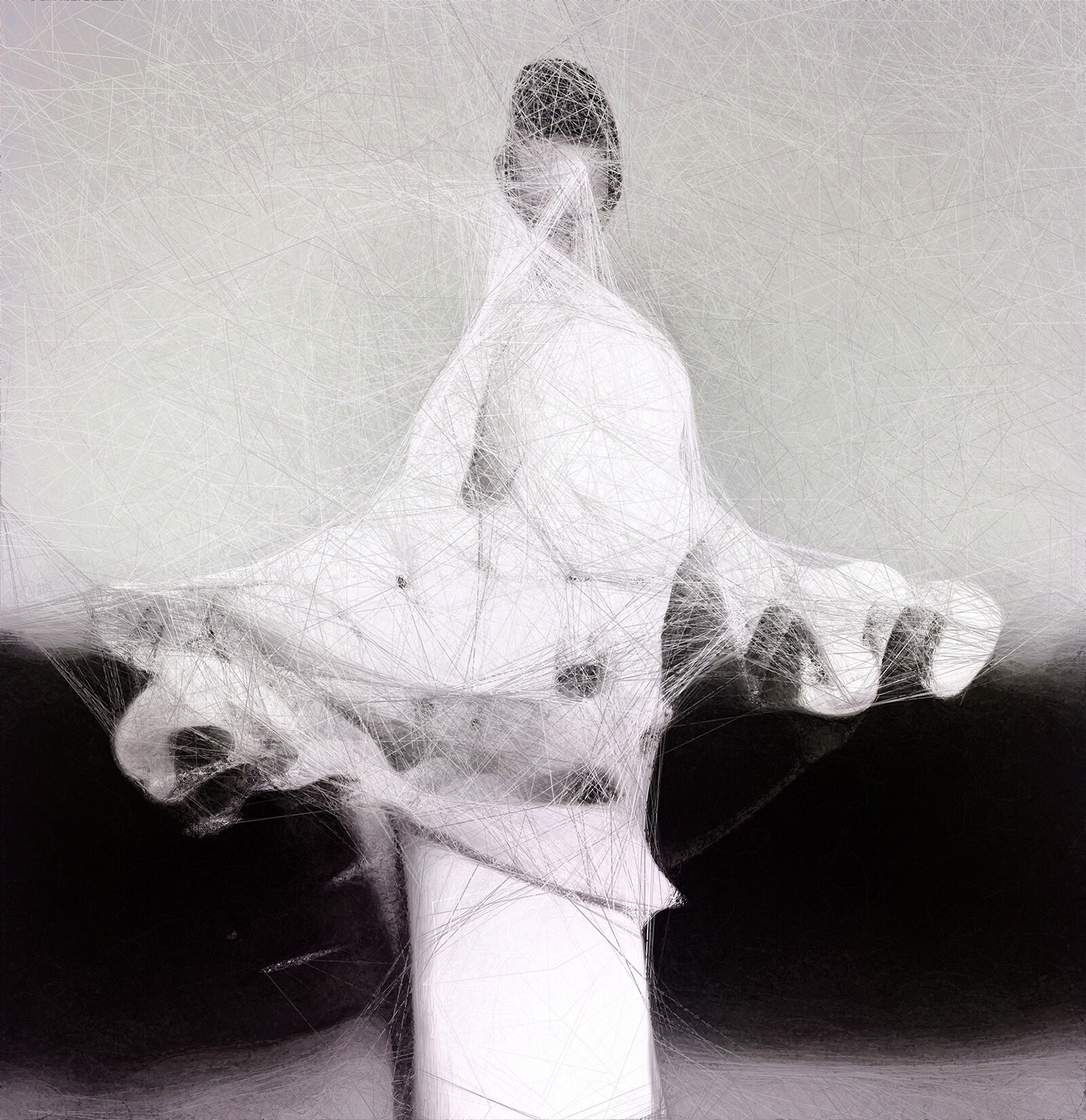It is widely accepted that propaganda makes for bad art. But propaganda is not always an Uncle Sam poster. Sometimes it is a towering, spectacular argument for the supremacy of the machine; an exercise in post-industrial American triumphalism, surveillance technology, and repressive deep-state R&D disguised as visually appealing, non-referential images. The United States has a long history of cultural campaigns aimed at furthering its imperial goals. The Museum of Modern Art’s historical connection to the CIA is—like Radio Free Europe and the Congress for Cultural Freedom—among the more notable examples of the government’s intervention in our civic life.1 But despite our awareness of these operations, the potential propaganda function of abstract and non-representational art rarely enters into its critical reception and evaluation. Perhaps the idea of propaganda is so thoroughly wedded to realism in the American imagination that MoMA’s collection seems unimpeachable. Maybe the term “propaganda” has become, through popular use, something that is only used by one’s political opponents. While it is tempting to argue that cultural control is now mediated by a confusing, irresponsible, and diffuse spectacle of corporate greed, Refik Anadol’s “Unsupervised” (2022) suggests that we should reconsider the utility of a more vulgar analysis of visual artwork as a purveyor of official politics.
The conceit here is that a twenty-four-foot square carbon-intensive screensaver displayed on the wall of MoMA’s atrium is “dreaming” and “exploring hallucination” (the full title is “Unsupervised—Machine Hallucinations—MoMA—Fluid Dreams”). These subconscious activities arise from a consciousness comprised of publicly available metadata from the museum’s permanent collection. The AI is not, as the press release implies and many reviewers have assumed, “seeing” images. It does not have senses; it is not that interesting. It just “knows”—in the same way that a calculator “knows” how to subtract one number from another—that Vincent van Gogh’s Starry Night (1889) is blue and yellow. And it has taken this information, combined it with data derived from weather conditions and non-consensual surveillance of the movement of museum visitors to produce colorful, undulating waves of Dippin’ Dots.
There are two algorithms in addition to the novelty ice cream act, both with distinct and less childish aesthetics. They are also, allegedly, “walking” through MoMA’s collection and “reimagining the history of modern art.” The AI, in other words, has exactly three dreams, which is a disappointing number for such a powerful machine.
Anadol is having a moment. His work provided the background for the most recent Grammy Awards ceremony and commissions from museums and commercial galleries will surely continue until the next person with adequate funding comes up with a prettier alibi for testing and refining the empire’s technologies of violence and domination on cultural consumers. A quick survey of AI companies on the internet will inform you that in the near future military dominance will be defined by the performance of its algorithms. This may be one reason why the Department of Defense has chosen Nvidia, the AI company that helps Anadol create the most boring dreams ever, as one of the recipients for funding from their new Advanced Robotics Manufacturing (ARM) institute.2
In a critical review for Artnet, Ben Davis astutely observes that one of the many problems with this particular Instagram background is that its use of MoMA’s collection as a data set implies that “art history is just a bunch of random visual tics to be permuted, rather than an archive of symbol-making practices with social meanings.”3 This is true. But “Unsupervised” is not a bunch of random visual tics. It has a very particular social meaning and function—this is tech boosterism at its best. “Unsupervised” is a program for the surveillance and colonization of collective space and the expropriation and control of forms of human creativity and production by companies that cannot be practically disentangled from the military. This is hard to discern through its fun, candy-colored spectacle, and this makes it, like Abstract Expressionism before it, all the more effective.
MoMA has always vigorously denied any connection to the CIA, but it was integral to the agency’s Cold War efforts to promote the superiority of American culture abroad. As Frances Stonor Saunders has convincingly shown, between 1947 and 1967 the United States was waging an extensive campaign that involved, often without their knowledge, many American artists and intellectuals in the establishment of American hegemony. The overall project—often mercurial, and institutionally diffuse by design—was aimed at convincing the world of capitalism’s cultural triumph over socialism (Stonor Saunders’s own career is not unsullied by this convoluted network of monetary and institutional support. Indeed, we are all probably implicated in some degree). Abstract Expressionism was central to this project: “Non-figurative and politically silent, it was the very antithesis to socialist realism.”4 Epitomized by Jackson Pollock, the work was, like the United States, severed from European painterly traditions, large, masculine, and active. It also refused to disclose any meaning beyond its simple, paint-spattered presence. In other words, it made a monument of the vapid superficiality ascribed to American culture by its detractors. Nelson Rockefeller, whose mother Abby founded the museum and who served as its president between 1939 and 1953, referred to Abstract Expressionism as “free enterprise painting.”5
In 2022 the William S. Paley Foundation—whose namesake was a MoMA trustee and close friend of Allen Dulles—sold a $70 million collection of paintings that had been housed by MoMA in order to fund the museum’s digital initiatives. From a certain perspective, trading Francis Bacon and Pablo Picasso in for some NFTs is offensive on its face. But this is actually in keeping with the museum’s more defensible, socially valuable activities: it collected photography before the medium was taken seriously, and Abstract Expressionism, even if it was a tool in the American war against communism, needed to be defended against a whole cadre of aesthetically conservative, reactionary critics and artists (Edward Hopper among them). American art would be worse off if Hopper had won that argument.
But there are significant material differences between Anadol and his AbEx predecessors. It is not the newness of the medium that is the problem here. Nor does the lack of human virtuosity in the production of the images somehow discount their value. It is the cultural work that the spectacular AI is doing to normalize surveillance systems, to turn environmentally devastating computation into something pleasing and even soothing, and to actively participate in the refinement of technologies that can and certainly will be used by the military that is the problem. The New York School was producing paintings that turned out to be aesthetically useful propaganda. Both Motherwell and Pollock were members of the American Committee for Cultural Freedom. If they did not realize the extent to which they were implicated in CIA activity, they also weren’t ignorant of their own political investments. But as a technology, paint has no political commitments and limited military use. Even if it is integrated into a larger project of international dominance, its usefulness for actual, violent repression is virtually non- existent.
AI, on the other hand, has myriad uses for economic, social, and military repression—a fact that is widely understood by the general public. Anadol must repress a massive amount of common knowledge to believe that the tools of his trade are neutral. And it is hard not to see this repression returning in his fantasy of himself. “I have been dreaming,” he told MoMA Magazine, “about compiling the largest rainforest biome data set in the world in collaboration with the Yawanawá people, which would give rise to a real-time, immersive rainforest-inspired artificial reality.”6 When the last acres of the Brazilian rainforest are sacrificed to power continual machine learning, I am sure the Yawanawá will appreciate the simulacrum.
For more details on the museum’s links to the CIA via the Congress for Cultural Freedom and other bridges, as well as a summary of Stonor Saunders’ arguments, see Frances Stonor Saunders’ “Modern art was CIA ‘weapon’,” The Independent (October 22, 1995), https://www.independent.co.uk/news/world/modern-art-was-cia- weapon-1578808.html.
“DoD Announces Award of New Advanced Robotics Manufacturing (ARM) Innovation Hub in Pittsburgh, Pennsylvania,” U.S. Department of Defense (January 2017), https://www.defense.gov/News/Releases/Release/ Article/1049127/dod-announces-award-of-new-advanced-robotics-manufacturing-arm-innovation-hub-i/.
Ben Davis, “An Extremely Intelligent Lava Lamp,” Artnet (January 23, 2023), https://news.artnet.com/art-world/refik-anadol-unsupervised-moma-2242329.
Frances Stonor Saunders, The Cultural Cold War: The CIA and the World of Arts and Letters (New York: The New Press, 1999).
Ibid.
“Refik Anadol on AI, Algorithms, and the Machine as Witness,” MoMA Magazine (December 20, 2022), https://www.moma.org/magazine/articles/821.
